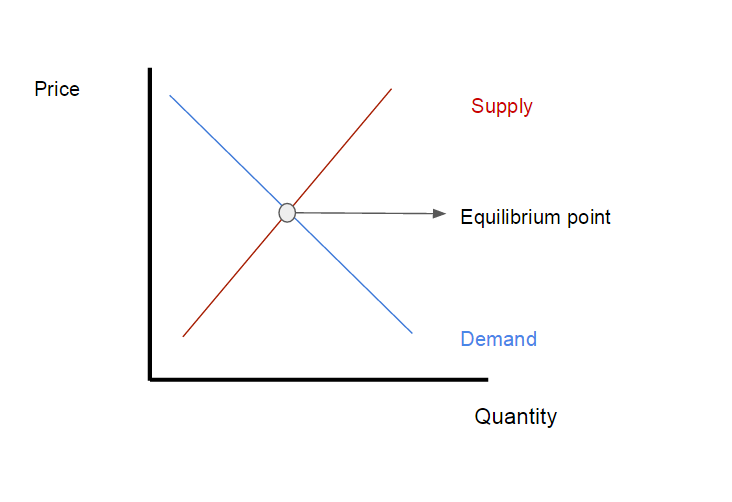So, your material is ready but how should you price your course? This is a difficult question to answer, because each case is different. Your price should ideally respond to the specific conditions able to guarantee sales.
Consider a basic economic principle to price your course: the law of supply and demand. This states that the availability of a product, plus the desire and rentability of potential consumers will condition prices.

The goal is to reach the equilibrium point in which you deliver a product at a price your consumers are willing to pay, while enabling you to increase profits. The demand for your course in the market should coincide with the type and quality of content you are able to offer.
The question then is: How can you point out the price that leads you to the equilibrium point?
Know your potential student: Characterize the people that could be interested in learning what you know and who would agree to pay for it. For example, if you’re offering a yoga course, your student could be a 18-40 year old woman, who appreciates her wellbeing to the point she’s willing to devote time and money to be healthy. Your potential students’ characteristics are essential to price your course.
Define the value of your course: Your students prioritize the value your course delivers. How will their lives change once they finish taking it? What objectives will they reach? What tools will they acquire? How will they be able to use them? Identify the value of your content and include it when you price your course. The value will also help you to tailor your promotional messages.
Calculate costs: A great advantage of creating an online course is that you only make a single investment. Recording your course might even take one day. Likewise, you don’t need to make a recurrent investment every week, month or year: once you publish your course on Teachlr, it will be available on the marketplace indefinitely.
On the other hand, production costs vary according to the type of course you’re creating. If you’re making your course through screencasts, you only need your computer, a few lamps, perhaps a microphone and an editing program. If you need to record your full body (such as in fitness or cooking courses), you will have to use lightning equipment, a camera and perhaps rent a room. (In any case, your smartphone works as a camera and mic perfectly).
Before starting to record, define how much you’re willing to invest and once the production is finished, calculate the total costs. It’s important to include the costs when you define you price your course. At the end, you’re doing business: your sales must cover the expenses and generate profits.
Research your competition: Learn about other courses in the market that teach your same topic. Pay attention not only to their prices, but take a look at the length, content, materials (videos, quizzes, audios, documents) and general quality, as well as the experience instructors have. Besides giving you a reference on prices, researching the competition will allow you to discover your differentiator. This information is key when creating the title, description, objectives and other promotional details.
Establish goals: Before starting to create your course, calculate the expected profits for a defined term. This helps determine the number of sales you need to make at the stipulated price, allowing you to test if it contributes to achieving your goals.
Test different price ranges: You can change the price of your course whenever you want. If the number isn’t helping you achieve the desired number of sales, try different prices and confirm which one gives better results. (We recommend that each hour of the course should cost between ten and twenty dollars). On Teachlr we also have tools that allow you to run these tests: offer your course with discount coupons for limited terms or join our Marketing Plan (coming soon).
An additional recommendation: While it’s counterproductive to overprice your course, you shouldn’t underestimate your content by underpricing it. A course with a comparatively lower price discourages purchases, as it gives the idea that the material is not of good quality and doesn’t deserve to be paid for. We have noticed that when students purchase expensive courses, they put more effort into studying and completing them successfully.
So, there were our tips. We hope to be of help! And if you have any other questions, drop us a line: info@teachlr.com




